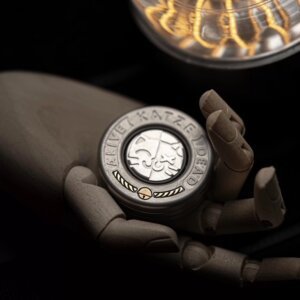Few outdoor adventures are as quintessential as gathering around a crackling campfire. However, getting that fire started can sometimes be a challenge. In this comprehensive guide, we’ll delve into the world of campfire starters, exploring the various ignition tools available to outdoor enthusiasts. Each method has advantages and disadvantages, from blow torches to magnesium rods to trusty lighters. By understanding the pros and cons of different campfire starters, you can make an informed decision for your next outdoor excursion. So, let’s dive in and discover the best way to ignite your wilderness experience!
The Conventional Campfire Starters
The most common starters are blow torches, magnesium rods, and lighters. Each option presents unique advantages and disadvantages. Understanding the pros and cons of these conventional campfire starters is crucial for selecting the most suitable option for any outdoor adventure.
Blow Torch
Pros:
- High Firepower: Blow torches provide an intense flame, making them ideal for igniting various fuel types.
- Versatility: Besides lighting fires, blow torches can be used for tasks like grilling meat.
- Efficiency: They quickly and effectively ignite charcoal, wood, or other fuels.
Cons:
- Dependency on Fuel: Blow torches require a fuel source, such as gas, to be refilled or replaced.
- Safety Concerns: Blow torches require careful handling to avoid accidents due to their intense flame.
- Limited Portability: Some blow torch models may be bulkier and less portable than other fire starters.
Magnesium Rod
Pros:
- Water Resistance: Magnesium rods are not affected by water, making them reliable in wet conditions.
- Durability: They are long-lasting and can withstand rough handling, making them suitable for survival.
- Portability: Magnesium rods are lightweight and compact, easily fitting into a backpack or survival kit.
Cons:
- Skill Required: Using a magnesium rod requires skill to generate sparks effectively.
- Additional Materials Needed: While magnesium rods can ignite tinder, additional fuel sources are needed to sustain a fire.
- Limited Flame: Magnesium rods produce sparks rather than a sustained flame, requiring additional steps to ignite more extensive fuel sources.

Lighter
Pros:
- Ease of Use: Lighters are simple to operate, requiring only a push of a button to produce a flame.
- Compactness: Lighters are small and lightweight, making them easy to carry in a pocket or backpack.
- Readily Available: Lighters are widely available and can be purchased at most convenience stores.
Cons:
- Dependency on Fuel: Like blow torches, lighters rely on a fuel source that needs refilling or replacing.
- Wind Sensitivity: Lighters may struggle to function in windy conditions, requiring shelter or protection to maintain a flame.
- Limited Lifespan: Disposable lighters have a finite lifespan and may not be as durable as other fire starters.
What to Look for in Campfire Starters
Consider your outdoor needs when selecting a fire starter. When assembling emergency kits, it is vital to prioritize waterproofing and protective cases. Among the options discussed, ferrocerium rods stand out for their ease of use and durability. On the other hand, while magnesium fire starters ignite quickly, they require more effort. Flint and steel, although providing sparks, are considered less reliable than ferro rods. The BBQ lighter is recommended as an efficient campfire starter for outdoor cooking and warmth.
Choose wisely based on your preferences and outdoor activities.
Upgraded Campfire Starter to meet all your needs
In recent years, there has been a notable trend towards upgraded campfire starters that integrate multiple functions to meet the diverse needs of outdoor enthusiasts. These modern campfire starters embody innovation by combining traditional ignition methods with additional features, resulting in compact and versatile tools essential for everyday-carry (EDC) camping gear.
Wind-proof Extendable Refillable Camp Fire Starter

The innovative campfire starter incorporates several features to enhance the user experience during outdoor adventures. These features include an extended arm for safe ignition, allowing users to maintain a comfortable distance from the flame.
Additionally, the adjustable direction of ignition increases efficiency by providing flexibility in lighting various fuel sources. The campfire starter also has a refillable fuel reservoir, ensuring prolonged use without frequent replacements.
Furthermore, its wind-proof design enables reliable ignition even in adverse weather conditions, enhancing convenience and reliability during outdoor activities.
BBQ Lighter Torch

This BBQ Lighter Torch seamlessly combines style and practicality. Crafted from high-quality materials, it boasts a disassemblable design for effortless storage and transport. With a threaded gas cylinder connector, quick ignition, and flame control valve, outdoor cooking becomes a breeze. It’s a versatile camping companion; its extendable rod doubles as a fuel pipe for your gas camping light.
Conclusion
Each fire starter has advantages and disadvantages. When choosing the right one for your camping trip, consider portability, reliability, and ease of use. Selecting the appropriate fire starter can ensure a hassle-free and enjoyable camping experience.









